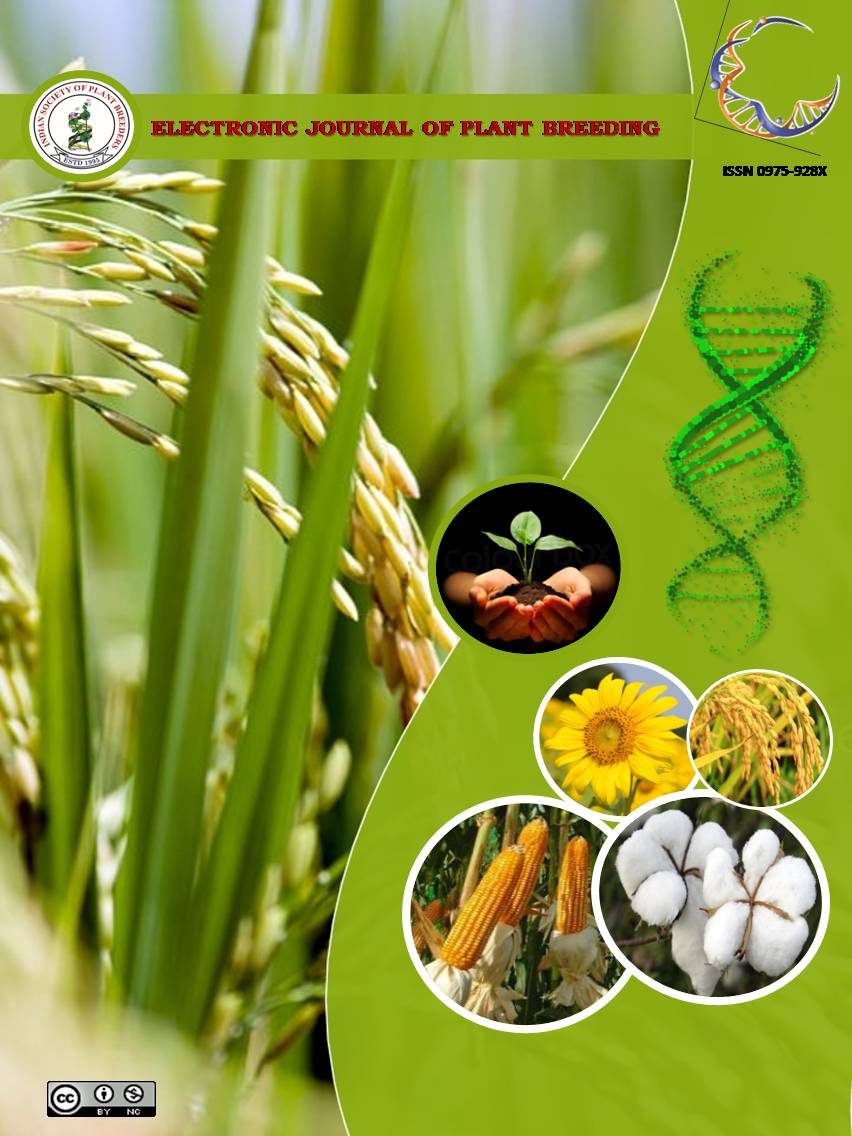Physiological and biochemical response of cowpea (Vigna unguiculata L.) landraces of Kashmir valley under water stress
Abstract
The present study is based on the hypothesis that natural variation for physiological and biochemical parameters can be effectively harnessed to improve water stress resilience. Under irrigated conditions, CTD decreased progressively. However, under drought stress, it decreased sharply. Under drought relative water content (RWC) had a mean value of 65.49% with the highest and lowest value recorded for C25 and C32. The largest and smallest reduction in RWC under drought was recorded in case of C32 and C9. There was wide variation in chlorophyll a and b content. The highest and lowest values for chlorophyll stability index (CSI) were recorded for C13 and C29 respectively. The DAB assay clearly differentiated the lines on the basis of darker staining of leaves. The lines showing greater per cent reductions in yield parameters such as C1, C2, C3, C7, C12, C14, C22 and C29 showed greater staining in leaves in DAB assay.

It is certified that:
- The corresponding author is fully responsible for any disputes arising due to the publication of his/her manuscript.
- The article has been seen by all the authors who are satisfied with its form and content.
- The sequence of names of authors in the by-line is as per their relative contribution to this experiment, giving due credit to all scientists who made notable contribution to it.
- All the authors fully understand that inclusion of any other co-authors or exclusion of any co-authors is not possible once the article has been submitted to the journal.
- The corresponding author takes full responsibility for this article.
- The address of the organization where the research was conducted is given.
- The article is exclusive for this journal, and the results reported here have not been sent (and will not be sent during its consideration by this journal) for publication in any other journal.
- Authors agree to abide by the objective comments of referees and do agree to modify the article into a short note as per the recommendation, for publication in the Electronic Journal of Plant Breeding.
- If published in Electronic Journal of Plant Breeding, the copyright of this article would vest with the Indian Society of Plant Breeders, who will have the right to enter into any agreement with any organization in India or abroad engaged in reprography, photocopying, storage and dissemination of information contained in it, and neither we nor our legal heirs will have any claims on royalty.


